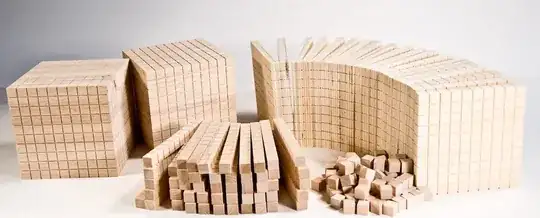Possible Duplicate:
Proof that $\sum\limits_{k=1}^nk^2 = \frac{n(n+1)(2n+1)}{6}$?
I am introducing my daughter to calculus/integration by approximating the area under y = f(x*x) by calculating small rectangles below the curve.
This is very intuitive and I think she understands the concept however what I need now is an intuitive way to arrive at $\frac{n (n + 1) (2n + 1)} 6$ when I start from $1 + 4 + 9 + \cdots + n^2$.
In other words, just how came the first ancient mathematician up with this formula - what were the first steps leading to this equation? That is what I am interested in, not the actual proof (that would be the second step).



